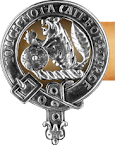Great-Great-Grandpa was part of the old home guard who was left behind to guard the citizenry of Monroe County, West Virginia while the young men were all of to War.
On 01 January 1864 he was fetched, along with a posse, to track down a group of renegades who were stealing clothing off citizens laundry lines. Now, this may not seem like much to us these days, but we are talking during the worst part of the Civil War, and these were folks who were poor to start with. At this time, they may have only had one change of clothing!
The posse chased the theives into Wiseman's Hollow and to a cabin.
As Great-Great Grandpa approached the cabin, one of the thieves, in the loft of the cabin, fired from a window, and Great-Great-Grandpa was shot in the head, mortally wounded and died.
He was wearing his prized beaver-skin hat at the time.
This is the hat William Bean wore that day.
It doesn't look like much... does it?
A faded, worn old hat. It's been hidden in a closet for much of its 150 years. And to the unlearned eye, it wouldn't mean much at all.
Look closely at the top of the brim, and you'll see where the bullet that shot WIlliam entered.
The dark stains that blot the front of the hat are his blood.
Family legend states that if you put the hat on your head, you'll die before the next full moon.
As a child I was told about "Cousin So and So" who put the hat on, and he died within a week! And before him, well there was "Uncle Whats-His-Name", and he died before the moon was full again!
While I've never found that to be fact, I also have heard from many who said that when offered the hat to try on... didn't take any chances and refused to put it atop their top!
Who's to say what would happen if the hat were placed upon your head.
I'm certainly not going to try it on.
Will you?













































